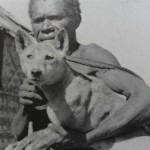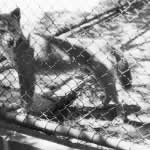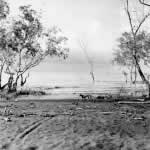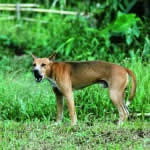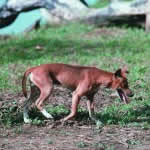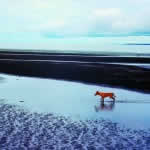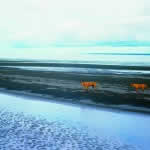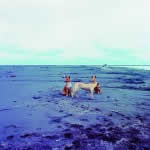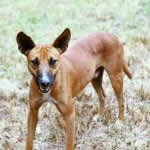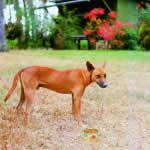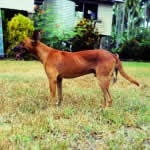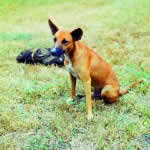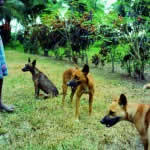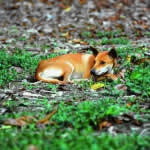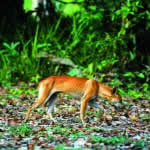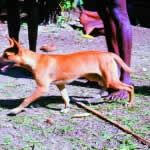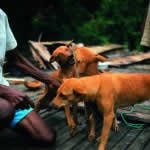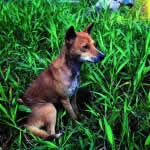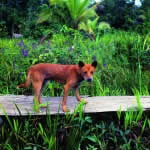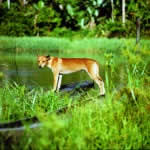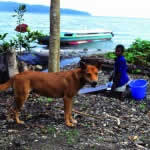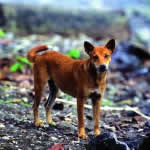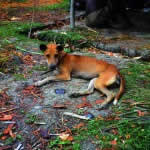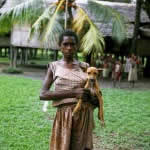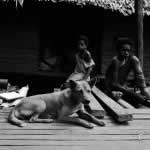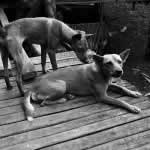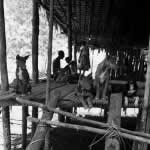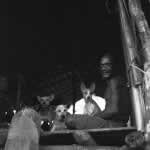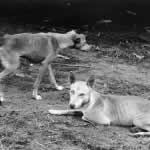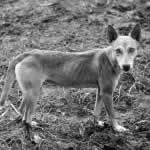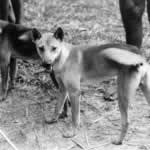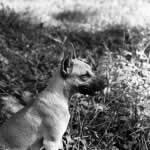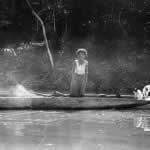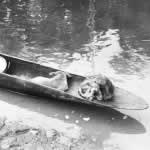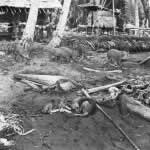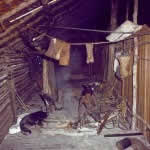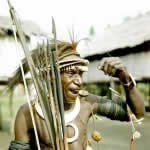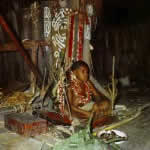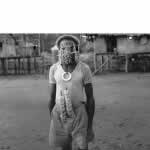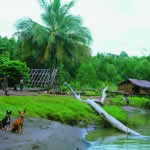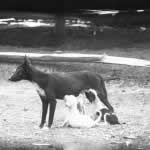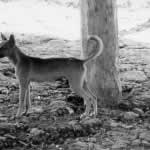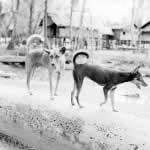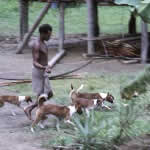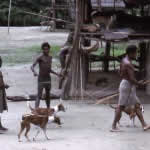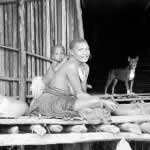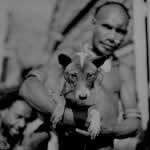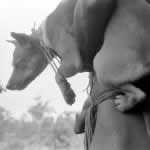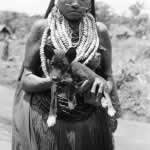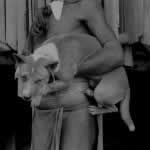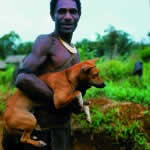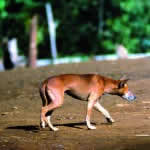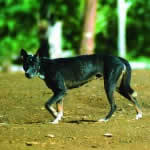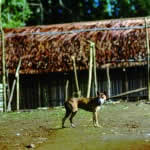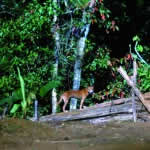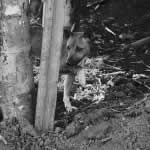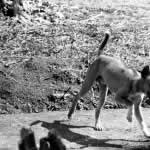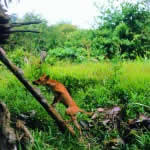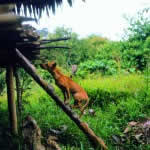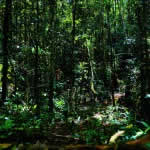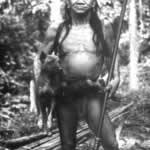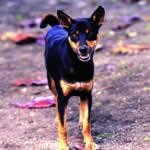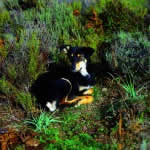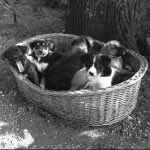For the text (pages 1 – 18), with references to the pictures, see article Papuan Dogs – the first companions of man.
Short Captions (cf. also references in the text):
fig. 1a, West Papua, Central Highlands, Wissel Lakes (from: LE ROUX 1950, see footnote F41)
fig. 1b, „Hallstrom’s Dog“, Melbourne Zoo, December 1965 (colour pictures will be added),
fig. 2, Papua New Guinea (in the following PNG) the strain of the southern coast, Bereina, 1966,
fig. 3, Papuan Gulf, PNG, Tutugu village on the Kikori River, inland from the Delta region, male dog
howling, 1966,
fig. 4, dto, same individual dog,
figs. 5 – 7, Papuan Gulf, PNG, Delta region, 1966,
figs. 8 – 12, Papuan Gulf, PNG, Babiko village (Kerewo ethnic district), 1966.
Measurements (male): hight to shoulder 47 cm, hight to belly 33 cm; body length 75 cm; tail lenght 28 cm; head 18 cm long and 10 cm broad.
figs. 13 – 14, Papuan Gulf, PNG, Delta region, 1966,
fig. 15, Papuan Gulf, PNG, Meagoma village (Gope ethnic district), 1966: our individual dog „Sobi“,
fig. 16, Papuan Gulf, PNG, Gope ethnic district, 1966,
figs. 17 – 19, Aramia River (Gogodala ethnic district), PNG, 1968,
figs. 20, 21, Kumawa Pensinsula (Kaimana), southern coast of West Papua, 1978,
figs. 22 – 30, Papuan Gulf, PNG, Delta region (Gope ethnic district), 1976,
fig. 31, Papuan Gulf, PNG, Delta region, our individual dog „Sobi“, 1966,
fig. 35, Papuan Gulf, PNG, Kerewo ethnic district, interior of communal house (dúbu daímo), woman’s cooking place, 1966,
fig. 36, Papuan Gulf, PNG, Delta region, Damaibari village, dogs teeth used in head decoration (béte),
fig. 37, Papuan Gulf, PNG, Mina-Goiravi village (Gope ethnic district), dogs teeth necklace in Paíroma initiation ceremony, 1970,
fig. 38, Papuan Gulf, PNG, Delta region, dogs teeth ornament (wíto-wih), worn by women in mourning, 1966,
fig. 39, Papuan Gulf, PNG, Delta region, two colour varieties of indigenous dogs, 1966,
fig. 40, Papuan Gulf, PNG, Gihiteri village, Omati River (inland from the Delta region), 1959,
figs. 41, 42, Papuan Gulf, PNG, Delta region, 1966,
figs. 43, 44 upper Sepik River, PNG, Idam Valley, Bamblediam village, photo Barry Craig 1973,
fig. 45, Mt. Bosavi region, PNG, Didessa village (Kaluli ethnic district): the dog on the left side is our
individual dog „Sobi“, the dog in the door frame a native dog, 1966,
fig. 46, Mt. Bosavi region, PNG, Womobi village, 1966.
Measurements (male): hight to shoulder 37 cm; body length 54 cm; tail length 20,5 cm; head length (ear to snout) 12 cm; ear 5,5 cm. Colours brown, black and white.
figs. 47 – 50, Mt. Bosavi region, PNG, Didessa village (Kaluli ethnic district), 1966,
figs. 51 – 54, Mt. Bosavi region, PNG, Didessa village (Kaluli ethnic district), 1966, „stocky“ variety of native dogs,
figs. 55 – 58, Mt. Bosavi region, PNG, Didessa village (Kaluli ethnic district), „slim“ variety of native dogs,
(resembling the coastal population). Note the string loop to keep the dog, 1966.
Measurements (male): hight to shoulder 35 cm; body length 58 cm; ear 7,5 cm; tail 24 cm.
fig. 59, our dog „Sobi“ on a track in the rainforest of Mt. Bosavi, 1966,
fig. 60, Penan man with his hunting dog, Borneo, from CARPENTER 1963,
figs. 61 – 63, the peculiar brown spots above the eyes: Papuan Gulf dog, Sardinia Island shepherds‘ dog
and pups of Papuan Gulf native dog „Sobi“ – the father was an European dog.
